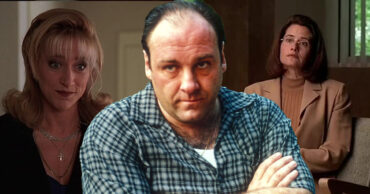Doctor Who’s “Day of the Moon” counts among the Time Lord’s best moments since the beginning of what has become the most successful and longest-running sci-fi series of all time. The Doctor’s adventurous journey through time and space via TARDIS began on November 23, 1963, and ran for 26 seasons until 1989. The series was revived in 2005 and has since outgrown its cult status to serve as a popular culture landmark for generations of viewers, cutting across various forms of media. From books to films and other television shows, Doctor Who has spawned a variety of spin-offs that ensconces its repute as an enduring franchise of fictional and entertainment phenomenon.
Traveling through ages with companions to protect time, wade off evil forces, and preserve the human race, the Doctor regenerates when death becomes imminent. This makes them incarnate into a new form that allows other actors to play the character. English actor, William Hartnell, was the first actor to play the Doctor and Rwandan-Scottish actor Ncuti Gatwa has been cast as the new incarnation of the character, the fifteenth Doctor. Matt Smith, the eleventh incarnation of the Time Lord, is often ranked among the best to portray the character. He is also the Doctor for the quintessential “Day of the Moon” episode of the series.
“The Day of the Moon” Completed “The Impossible Astronaut” Story

Although the Eleventh Doctor was first seen in “The End of Time”, the 5th Doctor Who Christmas special, Matt Smith’s official debut was in “The Eleventh Hour”, Episode 1 of Season 5. That Season ended with several unexplained mysteries which Season 6 continues to explore. Doctor Who Season 6 began with “The Impossible Astronaut” episode, laying out the basis for a more exciting Episode 2, “Day of the Moon”. Together, both episodes make a two-part story that started with “The Impossible Astronaut’ and concluded with “Day of the Moon”.
Written by Steven Moffat and directed by Toby Haynes, “The Impossible Astronaut” and “Day of the Moon” set a dark tone to the first part of Season 6, made up of seven episodes. Moffat who was also running the show incorporated American elements like President Richard Nixon, Area 51, and Apollo 11 into the plot of the episodes. These episodes also marked a significant moment in the history of the show as it was the first time Doctor Who was partly filmed in the United States.
“The Impossible Astronaut” follows the Doctor, Amy Pond, Rory Williams, and archaeologist River Song as they respond to a summon that plunged them into an adventure connected to the Oval Office in 1969. They were then engaged by President Nixon to solve the mystery surrounding a scared girl trapped in a space suit. “Day of the Moon” completes the story, relating how the Doctor’s commitment to President Nixon pits him and his allies against the Silence, a religious order of alien creatures controlling humanity since the beginning of civilization.
The Episode Left Many Unanswered Answered Questions

Doctor Who’s “Day of the Moon” episode completed “The Impossible Astronaut” story, yet it left several unanswered questions. From whether Amy is pregnant or not, to the death of the Doctor and who killed him, viewers initially thought of these unanswered questions as a flaw in an otherwise perfect episode. But then, the following episodes and indeed the whole of Doctor Who Season 6 evinced it was brilliant to have left the questions hanging. They proved to be part of a greater bunch of unresolved mysteries tied together and naturally resolved as the plot unfolds in subsequent episodes.
“A Good Man Goes to War”, Episode 7 Season 6, provides answers to the questions surrounding the little girl in a space suit. She is revealed as young River Song and also Melody Pond, Amy Pond’s daughter with Rory Williams. This resolves the question about Amy’s alternating pregnancy, hinting at why the little girl regenerates—she was conceived in the TARDIS while it was in the Time Vortex. The penultimate episode (“Closing Time” Episode 12) explains River’s role in the Doctor’s death as witnessed in “The Impossible Astronaut”. The final episode (“The Wedding of River Song” Episode 13) resolves the Doctor’s death, depicting that it was faked as a ploy against the Silence.
Doctor Who’s “Day of The Moon” Stood Out in an Excellent Season 6

“Day of the Moon” and its first-part story, “The Impossible Astronaut”, set a successful pace that rubbed off on the entire season of the series. On average, Doctor Who Season 6 pulled a consistent viewership of around 7 million per episode; with an Audience Appreciation Index that didn’t fall below 85%. Popular review aggregation website Rotten Tomatoes rates the season a perfect 100 with an audience score of 89%. The first part of the story recorded at least 8.86 million viewers altogether, and “Day of the Moon” had a total of 7.30 million.
The positive reception and critical acclaim of the season can in fair measure, be attributed to its exploration of the Silence. While much was said about the falling of the Silence in the previous seasons of Doctor Who, the alien creatures were first seen in “The Impossible Astronaut”. “Day of the Moon” further explores the plot thread, showing the Silence’s manipulation of humanity and how the Doctor eradicates them from Earth. Tying the events of the episodes to the Apollo 11 moon landing makes an intelligent tale that resonated with fans.
 Follow Us
Follow Us





